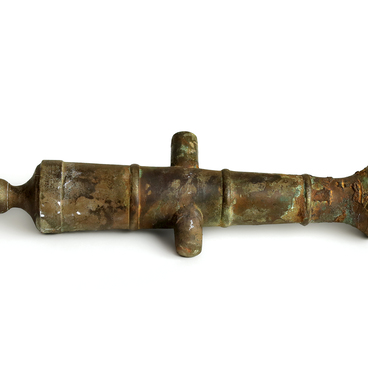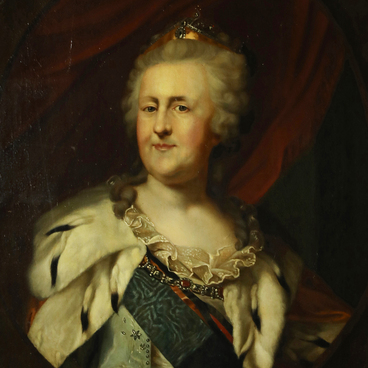Banners appeared long before regular armies. The Eastern Slavs used banners as symbols of military valor and glory.
The streltsy units, which appeared in the mid-16th century, had banners in each regiment and sotnya. In the 17th century, large regimental banners and boyar banners were transferred to the Armory. The banners of the streltsy and soldier regiments were kept in the army.
Under Tsar Alexis, all banners depicted an Orthodox cross (the cross of Golgotha) and stars (according to the company’s number). Later, until the end of the 17th century, sotnya banners with iconographic symbols were sewn only from imported silk fabrics such as damask and taffeta.
Iconographic images, angels or saints, were usually painted on one side of the banner. On the other side, there was a large six- or eight-pointed cross with the Instruments of the Passion — a reed and spear — which were often depicted using gold, silver, or paints. In the last decade of the 17th century, iconographic images were no longer painted on sotnya banners in Moscow, and only a cross remained.
Sotnya banners belonging to city nobles, boyar’s children, service class foreigners, and city Cossacks had a similar appearance. However, they differed in shape, size, color, and fabric. Thus, in the last decade of the 17th century, the visual status difference between Moscow sotnyas and city guards disappeared, foreshadowing the abolition of social stratification within the Russian nobility class, which was just beginning to form.
In Orthodox symbolism, the cross on a pedestal was a simplified version of the Cross of Golgotha with the Instruments of the Passion. At the same time, the six- and eight-pointed crosses, usually on a pedestal or steps, symbolized the Constantinian Cross.
As a military symbol, the Orthodox cross was part of the spiritual and cultural heritage of Byzantium. Since the time of Emperor Constantine the Great, it has been used to mark the military triumphs of Orthodox armies. The preservation of these symbols in Russia can be attributed to several factors. Firstly, there were no historical conditions or legal basis for the development of traditional European heraldry in Russia. Secondly, from the second half of the 15th century, the Tsardom of Muscovy became the only independent Orthodox state in the Christian world.


